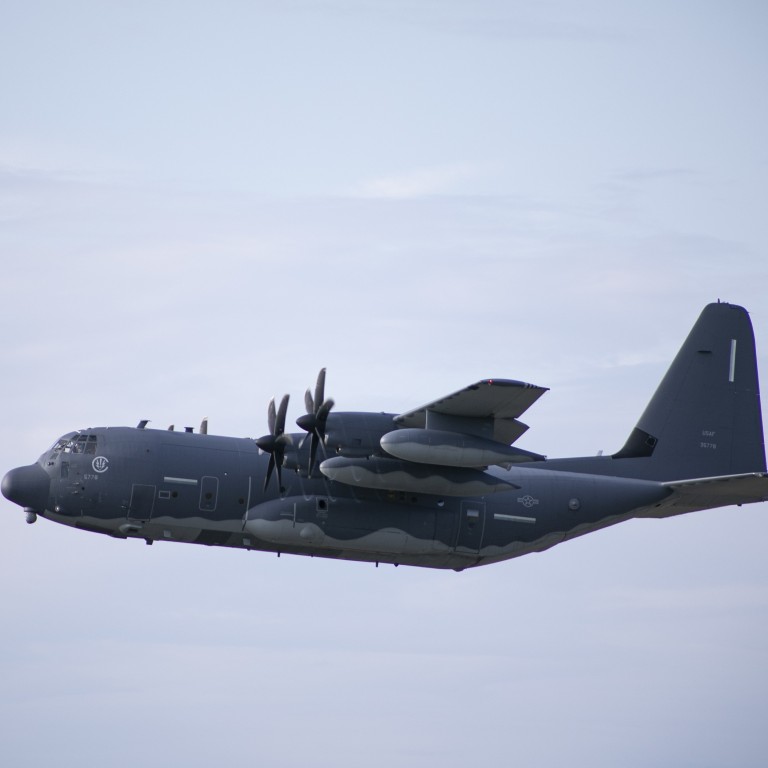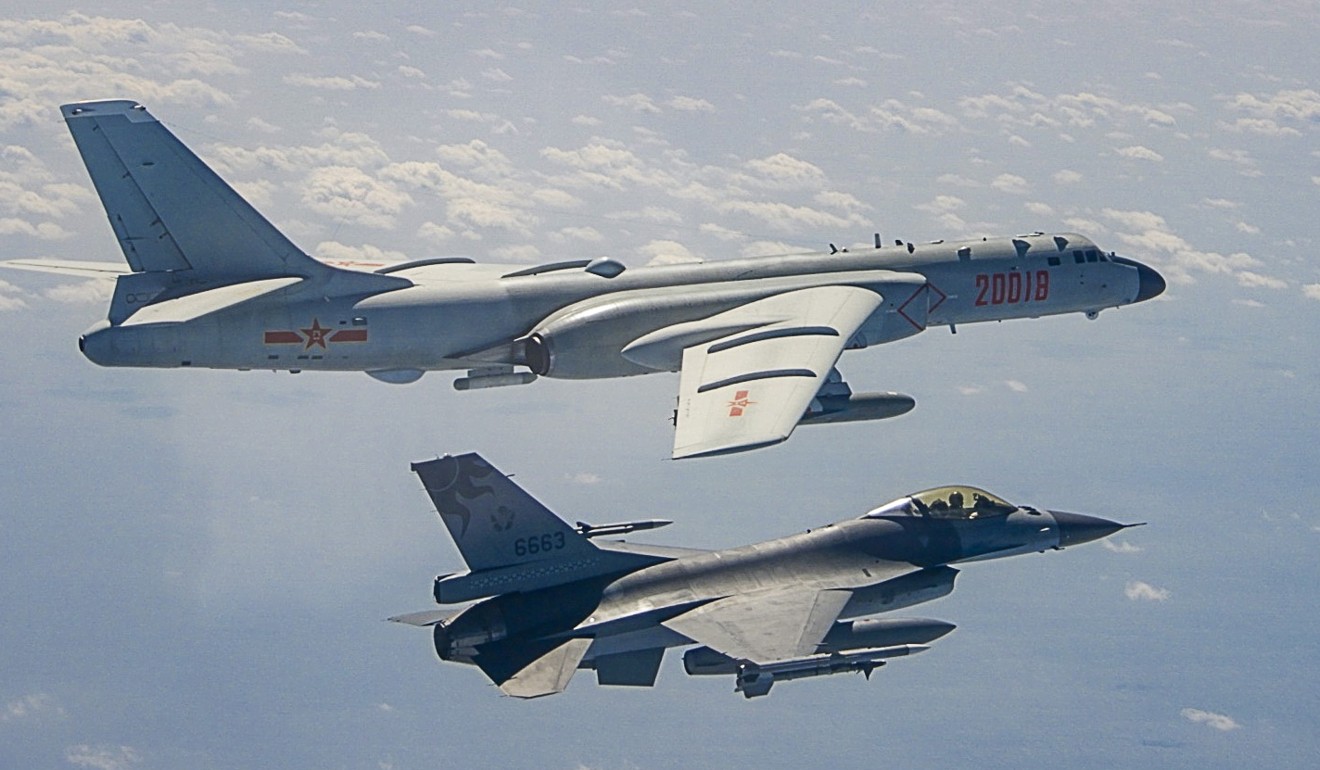
US sends surveillance planes over Taiwan Strait after Chinese war games ‘in show of support for Taipei’
- Flyover was a message of support for Taipei and a warning to Beijing, according to analyst
- Two special mission aircraft flew from Okinawa base towards the South China Sea
The United States Air Force sent two surveillance planes over the Taiwan Strait on Wednesday, following two days of mainland Chinese war games near Taiwan.
The two MC-130J special mission aircraft flew from the Kadena Air Base in Okinawa over the strait on their way to the South China Sea, according to a tweet by aviation tracking site Aircraft Spots.
Song Zhongping, a military expert in Hong Kong, said the flyover showed the US military was keeping a close eye on the PLA’s movements over the Taiwan Strait.
“The MC-130J is a strategic surveillance plane with cutting-edge monitoring technology that can closely watch the PLA’s activities in the area,” said Song, a military commentator for Phoenix Television.
“But it also sends a message to Taiwan’s [ruling] independence-leaning Democratic Progressive Party that Washington is supporting them,” he said. “Of course, the US military would also want to warn Beijing not to put too much pressure on Taiwan.”
Earlier in the week, PLA warplanes including its KJ-500 early warning aircraft, H-6K bombers and J-11 fighter jets carrying missiles, as well as escort warships, briefly crossed the median line in the Taiwan Strait on their way to the western Pacific through the Bashi Channel for live-fire drills, according to both the PLA and Taiwan’s defence ministry.
Ma Xiaoguang, a spokesman for the mainland’s Taiwan Affairs Office, on Monday warned the DPP administration led by Tsai Ing-wen against “playing with fire” by “trying to use its strengthening ties with the US to plot independence”.
Beijing sees Taiwan as a wayward province that must be brought back to the mainland fold – by force if necessary. Relations across the strait have deteriorated since Tsai was first elected president in 2016 and refused to accept the one-China principle.

Mainland military experts said the PLA drills aimed to show it was combat-ready for all challenges, with Taiwanese independence forces its top enemy.
“The PLA has two major missions – one is to be well-prepared for a war at any time, and the other is dealing with non-traditional defence challenges, such as natural disaster relief or epidemics,” said Song, a former PLA instructor with what is now its Rocket Force.
“Given the ongoing widespread coronavirus outbreak on the mainland, the PLA wanted to use these joint naval and air force drills to show they can deal with both types of challenges.”
The coronavirus, which causes the disease now officially known as Covid-19, has killed more than 1,000 people and infected over 44,000 in mainland China since the outbreak began in December.
“In the past, when the mainland has faced internal challenges such as social unrest or a political crisis, the Beijing leadership has attempted to shift the focus by ramping up tension in the Taiwan Strait,” said former Taiwanese defence minister Andrew Yang Nien-dzu.
“Taipei is now closely watching whether the PLA will make crossing the median line a regular operation in the future, which could cause misjudgments and misunderstanding between the PLA and Taiwan’s military,” he said.
“Aside from the … two days of drills, Beijing also used strong words to remind Taipei and the US that there would be a heavy cost if they dared to make any provocations,” Lu said. “But this type of intimidation doesn’t work any more with the growing anti-mainland sentiment in Taiwan.”
Yang said the Tsai administration saw maintaining the status quo as the best way to keep the peace across the strait. “Taipei wouldn’t cross the red line [seeking Taiwan independence],” he said.

